The Story of Turquoise Gemstones
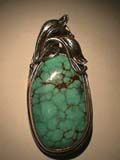
Turquoise
Source: Southwestern United States, Middle East
Chemical: CuAl6 ((OH)2/PO4)4
Formation: Below are a photographs of a specimen from the only known source of crystalline turquoise. Found in 1912 in Virginia, United States. Turquoise normally occurs as an opaque, granular vein running through a host rock. It forms as a result of decomposition of copper ore. The finest will be an even blue, blue-green, or green color with little or no mottling.
Crystal System: Triclinic (rare)
Unusual Properties: Turquoise has used in jewelry items in the Southwestern United States by various Native American tribes. And previous to that it was an important ornamental mineral for jewelry and other object by the ancient Egyptians.
Colors: Medium dark blue to medium green with all colors in between possible.
Wearability: Turquoise will generally take a lot of wear and tear without showing damage other than dings from being hit. It will be damaged by jeweler’s torch. Will burn if subjected to heat. Care should be taken since there are many different types of treatments being done to turquoise. From impregnation with waxes and other fillers to improve color and hide cracks, to reconstitution of broken turquoise into new pieces by compression and glue.
Most turquoise from the Southwestern United States will be mottled green as with the pendant below:
Transparent Turquoise Crystals
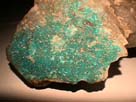
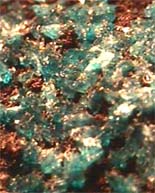
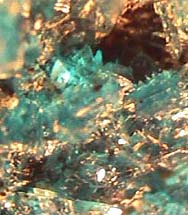
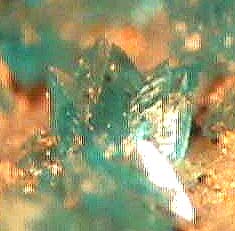
#1 Area visible is about 4 inches ……#2 View at 10x……….#3 Also 10x magnifcation….#4 At 30x magnification

